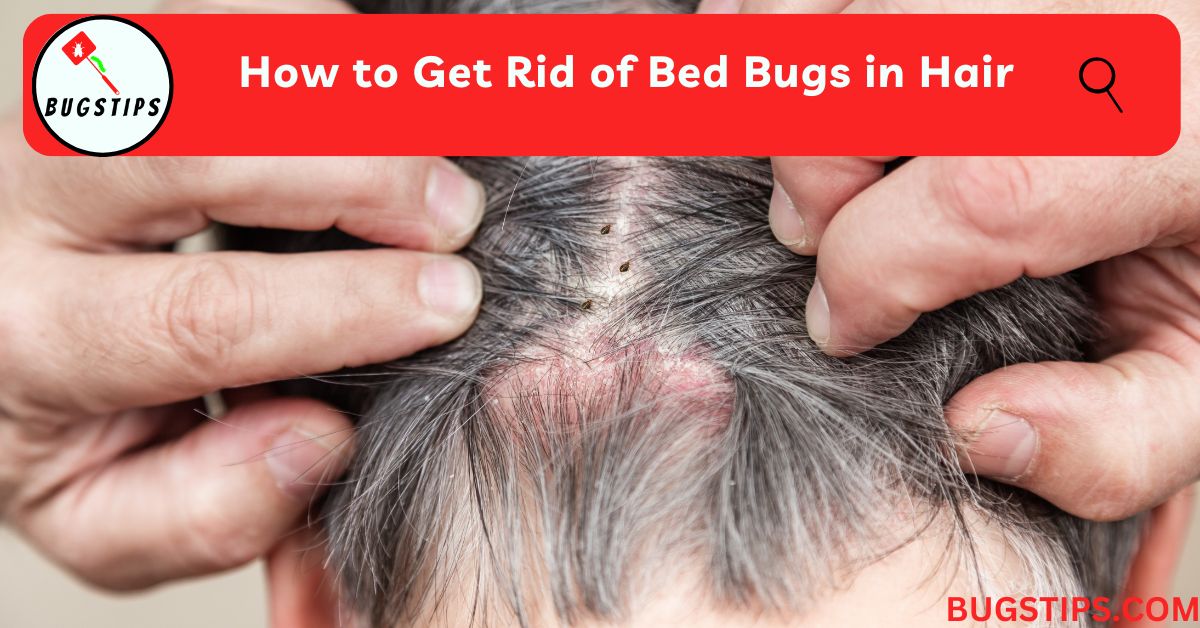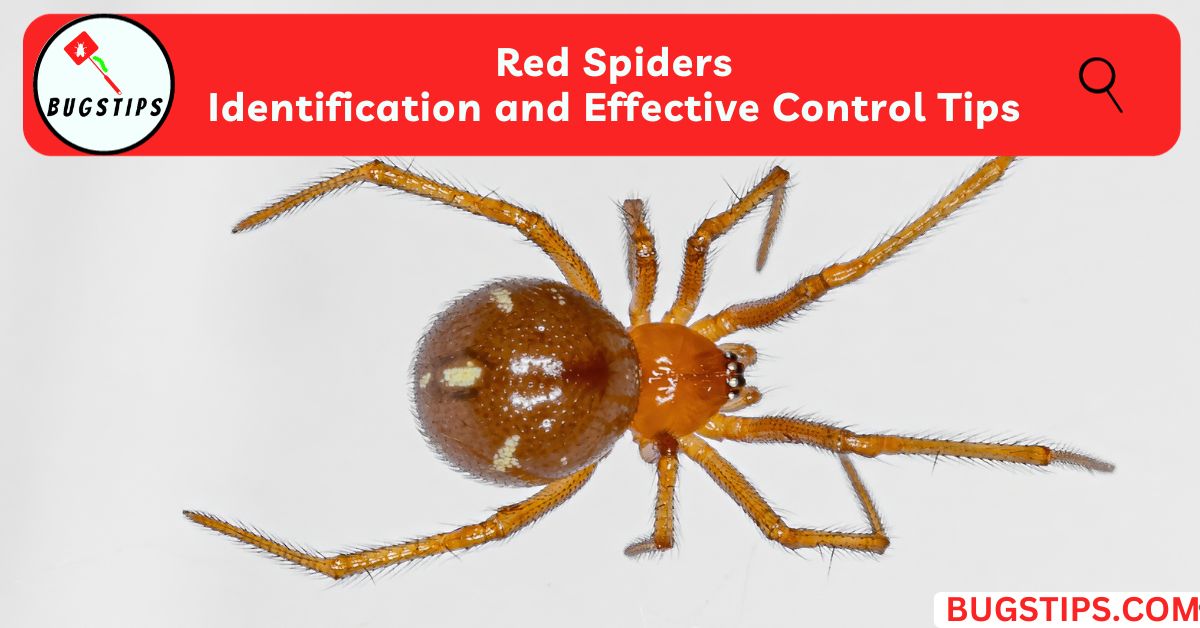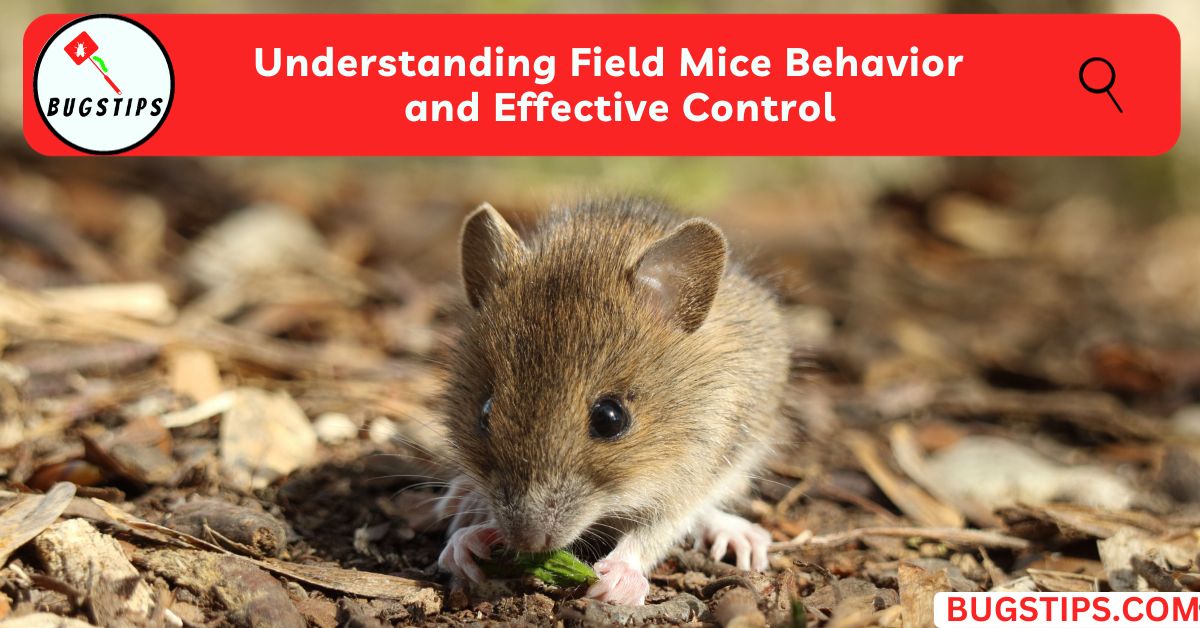This post may contain affiliate links which means as an Amazon Associate, this site may earn a small commission on qualified purchases made through links at no extra cost to you. Learn more on Affiliate Disclosure
Worms are odd, wiggly creatures that most of us encounter at some point, either in our gardens or while fishing.
But most of us have this question – do worms feel pain? It’s an interesting scientific question. At first glance, it may seem unlikely that simple organisms like earthworms have any sense of pain or suffering comparable to humans or other animals.
However, researchers have found that worms exhibit behavioral and physiological responses to harmful stimuli that suggest some nociception or aversion response.
This article will review scientific studies that provide clues about worm perception of pain.
We’ll look at the evidence on whether techniques like cutting worms in half or putting them on hooks appear to cause pain based on their reactions.
We’ll also explore if and how these critters can regenerate parts of their body like their heads after injury. Read on to uncover the surprising capabilities of the earthworm when it comes to pain and regeneration.
Do Worms Feel Pain?
Worms have very simple nervous systems compared to humans and other complex creatures like mammals. They lack the intricate brain structures and neural networks that scientists typically associate with the ability to consciously experience pain.
At first, this might suggest worms likely cannot feel or suffer from pain in any significant way.
However, researchers have found that these basic invertebrates exhibit some surprising responses when exposed to harmful stimuli.
Studies applying acidic or salty solutions to worms have triggered reflexive reactions like writhing, fleeing, and avoidance behaviors.
Worms have rudimentary nerve cell clusters running through their bodies that allow sensory detection and movement coordination. When they encounter tissue-damaging threats, signals pass to these nerve centers triggering protective reactions.
While worms clearly don’t feel pain in the same advanced way humans do, their reflex reactions suggest a basic capacity for nociception – the ability to recognize and respond to harmful triggers.
Their impulse to flee from danger serves an important survival function.
Exactly how conscious or subjective worms experience discomfort and damage may remain scientifically unclear and requires more research.
But they appear to feel something unpleasant, even if limited compared to human pain perception.
Related Article – Do Spiders Feel Pain?
How Do Worms Detect Pain?
As mentioned above, worms lack the complex brains and advanced nervous systems of humans and other sophisticated animals. So how do these simple invertebrates detect potentially painful or tissue-damaging stimuli in their environments?
Worms like earthworms have rudimentary neural circuits running through their bodies, with clusters of nerve cells, called ganglia concentrated in each body segment.
These interconnected ganglia form a basic sensory network that allows worms to perceive touch, temperature changes, light, and chemical signals.
When a worm encounters a harmful trigger like caustic chemicals, receptors in its skin and internal tissues transmit signals to the nervous system. This activates the ganglia to produce neurotransmitters that trigger reactions like writhing or fleeing.
Their ability to synthesize their own pain-killing opioids is further evidence worms can detect and respond to nociceptive-like signals.
In studies, worms exhibit avoidance behaviors when exposed to conditions previously paired with noxious stimuli, suggesting a basic capacity for sensory learning related to harm.
Genetic research has identified which ion channels and receptors are involved in sensing tissue injury.
While rudimentary compared to human anatomy, these neural mechanisms do enable worms to detect threats in their environment and survive.
More research is still needed to better understand worm cognition and whether their experience of harm extends beyond reflexive nociception.
However current evidence indicates even simple invertebrates are able to perceive and react to life-threatening triggers.
You May Also Like – What Do Hornworms Turn Into?
Do Worms Feel Pain When Cut?
As mentioned before, research shows that cutting or injuring a worm does trigger nociceptive impulses, causing neurotransmitter release and writhing motions.
When severed fully in half, the separated parts will continue writhing, hinting at distributed pain perception. Worms also learn to avoid environments where they were cut previously.
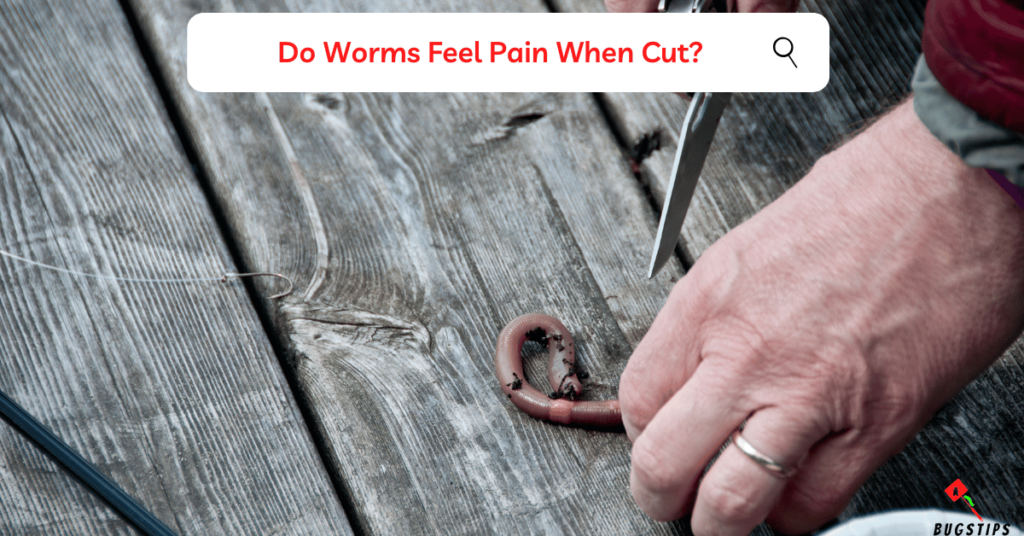
Additional studies reveal more about how worms react when cut. Using laser microsurgery, scientists can carefully sever parts of a worm’s neural circuits and observe their response.
When nerve cords are cut, worms often exhibit “shrinking” behaviors away from the damaged segments and reduced movement, suggesting an aversive response.
Worms also release chemicals that appear to function like local anesthetics when nerves are cut. This may numb areas of damage.
Some worms even secrete compounds that aid in reconnecting severed nerve endings to promote healing after injury.
Research also shows calcium waves and increased dopamine levels in tissues near a cut site on the worm, indicating neural signals of injury. Genetic studies have identified specific molecular channels involved in sensing tissue damage.
While the degree to which worms consciously “feel” pain when cut remains unclear, their physiological and behavioral reactions do appear protective to help preserve the organism.
You May Also Like – 16 Green Bugs That Bite
Do Worms Feel Pain When Inflated?
Scientists have tested worms’ reactions to inflation as another means of evaluating potential pain responses.
One study slowly inflated immobilized earthworms using a syringe until they popped. The worms exhibited writhing motions and released cysteine, a neurotransmitter involved in pain response. This suggests inflation causes tissue damage signals.
Worms inflated with compressed air also reacted by elongating and contracting their muscles.
When finally ruptured, they discharged coelomic fluid through their anus – potentially a protective mechanism to regulate body pressure. Caenorhabditis elegans worms inflated in studies also displayed aversive avoidance behaviors afterward.
However, other experiments found no major differences in nerve signaling between control and inflated C. elegans worms. Only slowly inflated worms showed heightened calcium levels hinting at pain perception. Rapid inflation to rupture showed no neurological changes.
While inflation can be an ethically questionable practice, these mixed results demonstrate worms may experience some nociceptive response depending on the inflation rate.
Fast rupture likely induces massive trauma that overwhelms their neural circuits. However, gradual inflation seems to elicit protective neurological reactions indicative of distress.
You May Also Like – 8 Bugs That Look Like Flying Termites
Do Worms Feel Pain When You Put Them On A Hook?
Anglers often wonder if worms experience pain when threaded onto a fishing hook. Like cutting and inflation, piercing their tissues does seem to generate nociceptive responses.
Studies observing nightcrawlers pierced by a hook found they exhibited writhing and exploratory movements suggestive of discomfort. However, chemical numbing of the area reduced this reaction, hinting that worms can locally detect tissue damage signals.
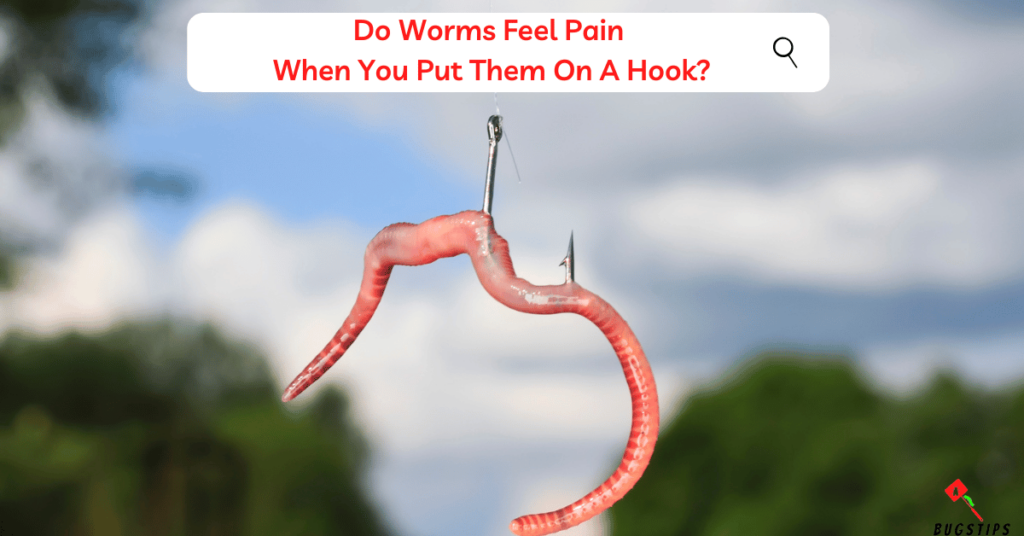
Being suspended in the air also contributes to their observed writhing when on a hook. Worms require moisture to breathe through their skin and become agitated when dehydrated.
However, their fleeing behaviors when touched by a hook in normal conditions indicate aversion beyond just drying out.
Guided by nerve impulses, worms also will twist, coil, and contract their muscles in specific patterns when pierced to protect vital internal organs from harm. These localized responses help minimize damage from the hook.
When this collagen is inhibited, worms no longer display hook avoidance behaviors, pointing to col-99’s role in nociception.
So worms do appear to exhibit protective nociceptive responses when pierced by a fishing hook.
You May Also Like – 12 Bugs That Look Like Bed Bugs
Do Mealworms Feel Pain When Processed?
Studies have found that exposing mealworms to various environmental stressors designed to mimic commercial practices does induce behavioral reactions indicative of nociception.
Mechanical agitation, heating, UV light exposure, and chemicals from damaged mealworms triggered increased mobility and avoidance behaviors.
However, behaviors like writhing and fleeing require more complex sensory processing than mealworms’ simple neural circuits can likely support.
And their reactions occurred even in the absence of any apparent tissue damage.
So commercial processing methods may generate reflexive responses without necessarily causing conscious pain.
Nonetheless, concerns about potentially inhumane treatment have led the European Union to begin extending animal welfare protections to invertebrates like mealworms used for food.
Given their rudimentary nervous systems, it remains ambiguous whether mealworm larvae are neurologically sophisticated enough to experience suffering when farms process them.
You May Also Like – Can Cockroaches Live Without Heads?
Do Worms Grow Back If Cut in Half?
The ability of worms to regenerate missing parts or grow back when cut in half depends on the species. Some worms can fully regrow severed sections, while others are more limited.

Earthworms
- If an earthworm is split behind its clitellum band, the head portion can survive and regrow the severed tail section.
- Their regenerative capacity is limited though – the original tail cannot form a new head or vital organs.
- The tail portion will eventually die without a head.
Flatworms and Nematodes
- Unlike earthworms, some flatworms and nematode worm species can fully regenerate heads, tails, or even entire bodies when cut into pieces.
- These worms have robust regenerative abilities powered by abundant pluripotent stem cells.
- When parts of their central nervous system are removed via dissection, apoptotic remodeling reprograms the remaining tissues to rebuild what was lost.
- This allows flatworms and nematodes to regrow heads, and tails, or form whole new worms from small pieces if surgically divided.
Three-Banded Panther Worms
- The three-banded panther worm has remarkably potent regenerative abilities.
- If one of these worms gets cut in half or into thirds, the separated pieces can each regrow into a fully functioning individual worm.
- Within just about a week after being sliced apart, the dissected sections will have regenerated all missing parts to form whole new panther worms.
- This ability to readily clone itself through intentional dissection or accidental injury in the wild makes the panther worm a particularly hardy and adaptable species.
Hammerhead Worms
- Like panther worms, hammerhead worms can wholly regenerate if cut in two.
- Both head and tail pieces will regrow the missing sections to form entire new worms in a matter of days after being cut in half.
- Their extensive regenerative capacity aids survival, while also enabling population spread through fragmentation as each piece regrows into a viable individual.
You May Also Like – Bugs in Mailbox | 10 EASY Ways to Keep Them Out
Final Thoughts
Do worms feel pain? The question remains scientifically ambiguous. Their simple nervous systems suggest a limited capacity for conscious pain perception.
However, worms do demonstrate reflexive responses to harmful stimuli indicative of basic nociception.
While worms may not subjectively experience pain as humans understand it, their avoidance reactions and neural signaling show an evolved ability to survive tissue injury.
Ultimately, scientific ethics call for a compassionate approach rooted in evidence when interacting with all life.
More research on the nuances of worm cognition and neurobiology would lead to greater understanding.
But we may never fully know the inner experience of another creature. A nuanced exploration of this issue can lead to greater reverence for life in all its diverse forms.
FAQs
Do worms have nerves?
Yes, worms have nerve cells that help them detect and respond to various stimuli in their environment. These nerve cells are organized into ganglia, clusters that serve as rudimentary nervous systems.
Do worms have brains?
Most worms, including earthworms, lack complex brains like those found in vertebrates. Instead, they have clusters of nerve cells that serve as control centers for various bodily functions.
Do worms feel pain like humans?
Worms’ ability to perceive and experience sensations is fundamentally different from humans.
While they can react to stimuli, their responses are automatic and not indicative of the conscious experience of pain that humans feel.
Do worms feel pain when you cut them in half?
When worms are cut, they exhibit reflexive responses to the injury. These responses are protective mechanisms rather than conscious experiences of pain as humans understand it.
Can a worm regrow its head?
The ability of worms to regrow their heads depends on the species. While some worms, like flatworms and certain nematodes, can regenerate missing parts, earthworms do not have the ability to regrow their heads once severed.
Resources – (for further reading)
NAUTILUS – Even Worms Feel Pain
Forest Preserve District of Will County – Will a worm regenerate if it gets cut in half?
WormAtlas – Hermaphrodite – Nervous System – Neuronal Support Cells
Britannica – Nervous system – Annelids, Reflexes, Sensory

